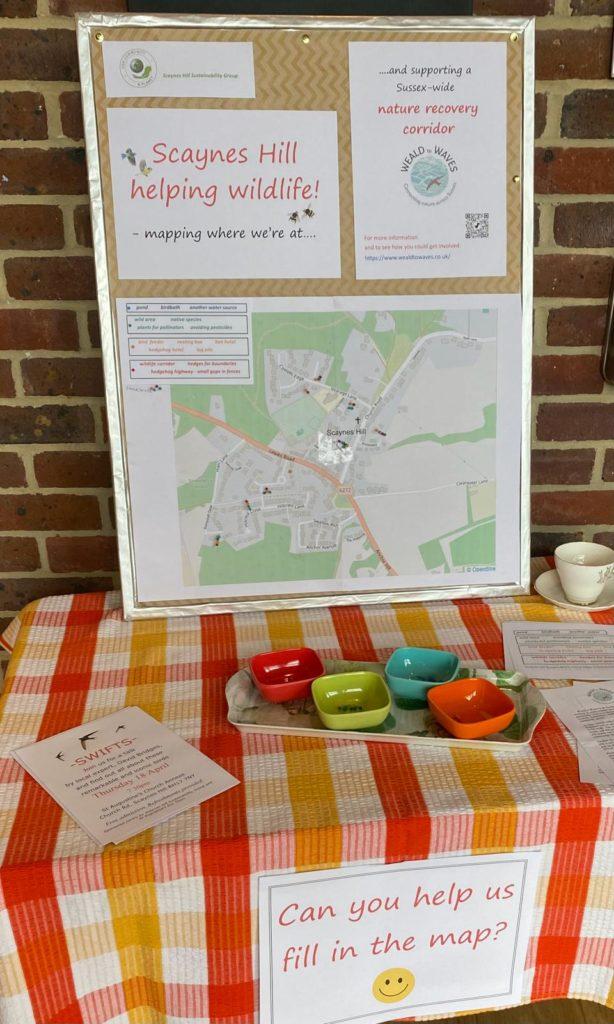The new SHSG mini-project, supporting the Weald to Waves green corridor scheme by mapping nature resources already available to wildlife in our Scaynes Hill gardens and green spaces, had its first outing at the Flower Show in March. This is a interactive map of the village where people are invited to identify their garden and stick coloured pins there to represent the wildlife resources that they already provide, such as ponds, wild areas, plants for pollinators, nesting boxes, bee hotels or other wildlife refuges like log piles. At the Flower Show over a dozen people added pins to the map, which will be present for more additions at future community events.
Weald to Waves is an exciting Sussex-wide project working to create a nature recovery corridor. The project partnership involves a network of farmers, land managers, councils, researchers, wildlife charities, schools, gardeners and community groups. More information on the project as a whole can be seen at: https://www.wealdtowaves.co.uk/.
As their website makes clear, nature cannot survive in fragments and we are one of the most nature depleted countries in the world. This is especially true in our densely populated Sussex and this project aims to ‘join the dots’ in a way that will enable our local animal and plant life, and the farmers and communities that depend on them, to thrive.
Gardens are a crucial part of the picture and although Scaynes Hill is not part of the official ‘corridor’, we are very close to it, and we are now being invited to consider pledging at least 30% of our garden space to become a haven for wildlife. If you would like to do this then on the Weald to Waves website click ‘Get Involved’ and follow the link to ‘Join Us’ under ‘Gardens and Green Spaces’ to register an interest in relation to your own garden or piece of land.
Plenty of information and advice will be available from the project to support this and once the development of the interactive map on their website is completed, our own gardens and green spaces will appear as dots marking the stepping stones that will contribute to greater wildlife abundance.
